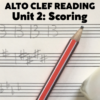(Tip no. 1 from “100 Orchestration Tips,” Part I: The Wind Section)
Breathing for wind instruments is cyclical, not inexhaustible.
Breathing is the foundational mechanism for the operation of wind instruments. It’s puzzling why, therefore, some orchestration manuals pass so lightly over the subject. This gap undoubtedly contributes to that question often posed by the student composer: “Just how long can a wind player hold a note?”
This question shows that the manuals haven’t adequately covered the subject of how wind players breathe, and how that breath is used musically and expressively. Take, for instance, the outcome of answering this question. We’d need to set a different value for each instrument and auxiliary, and adjust that for the lung capacity of each player. But once those values were established, their existence would pose a threat to intelligent scoring. Freed from the necessity to learn about the limitations and natural processes inherent in breathing from the actual player, students might use these charts to justify composing completely unplayable phrases.
For instance, let’s assume that our chart says that oboe players can hold a note for 45 seconds. Reading this, our hypothetical student orchestrator figures out what that means in terms of beats per minute, and scores exceedingly long phrases in their work, one immediately following another. Now the player has no time to recover their breath, and their natural breathing cycle has been stretched past the limit. The result: their arc of expression will diminish as they struggle to fulfil these enormous durations, and the whole affair will feel exhausting if not demoralising.
How have we come to this pass? The answer is simple. We have been taught to think of woodwind playing strictly in terms of what we hear as musical notes, which represents the outflow of air. We don’t think about inflow as music, but as necessary gaps within which the player can recover their breath so that they can get back to work.
I feel that this perception is far too narrow. Breathing is about inspiration and expiration. Listen to the speech of a great orator, and how each phrase is measured and delivered with the exact amount of power to convey emotional and intellectual meaning. Then listen again for how the speaker sets up each sentence with the correct amount of support, and how words are paced so that that breath falls naturally in moments that feel inevitable. What you’re hearing is perfectly measured cyclical breathing, wherein the natural rhythms of speech balance the inflow and outflow of air.
Once you’ve completed this experiment, score-read some perfectly-composed music for winds. Start with pieces like Janacek’s Mladi and Mozart’s Gran Partita. You’ll see the application of this principle in many passages, with measured phrasing that encourages natural breathing. You’ll also witness long, glorious passages that use the full capacity of breath from a player, followed by generous periods of rests within which to recover.

What you may also notice is that certain instruments have a different capacity for note duration. Oboes possess the lengthiest natural capacity, as the air passage through the reed is so restricted that the player may well need to breathe out unused air at the end of a long phrase. So their risk becomes more one of wearing out the embouchure similar to a horn or trumpet player – and yet the cyclical model still holds true, in workable periods of tension and release.
Bassoons and clarinets are somewhat less capable of extremely long tones, and flutes least of all. Larger auxiliaries like contrabassoon, bass clarinet, and alto flute subtract more duration of breath, and loud dynamics even more. A player can start to get dizzy from playing a very long and forceful note. But now that you understand these extremes, reduce them to reasonable lengths. What you’re left with is a template for natural cadences of inflection and rhythms of breath. Applying it to your scoring helps ensure optimum performance by your players.









